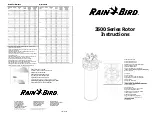
42
Product Service: Domestic 1-800-522-7658, International 816-333-8811
Chapter 7: Troubleshooting
2. Check the oil level in the pump. Ensure it is
filled to the correct level.
3. Check vacuum hose connections from the pump
to the Freeze Dryer and try running the unit.
If vacuum problems continue, consider obtaining a
second vacuum gauge capable of reading a vacuum of
10 x 10
-3
mBar. It is often useful in determining if the
vacuum pump is good and the vacuum sensor reading is
accurate.
4. Isolate the pump by disconnecting the vacuum
hose from the Freeze Dryer. Deadhead the
pump by inserting the vacuum sensor from a
secondary vacuum gauge into the end of the
vacuum hose and observe the vacuum reading
obtained. Confirm that the pump is capable of
achieving an ultimate vacuum less than 10 x
10
-3
mBar or approximately 10 microns. If an
inadequate vacuum reading is obtained, the
pump has most likely failed and may need to be
replaced or rebuilt.
II. Gaskets, Tubing, Connections,
Sample Valves
1. Inspect gasket(s) for cracks or defects. Ensure
the gasket is clean. Apply a thin coat of vacuum
grease to the gasket. Keep in mind, too much
vacuum grease can actually cause leaks.
2. Check the drain line and ensure the drain plug is
installed and the tube appears to be in good
condition.
3. Check all rubber vacuum tubing for signs of
deterioration or cracking.
4. Check all connections and make sure they are
secure and leak tight.
5. Check all sample valves on the drying
chamber/manifold and ensure all valves are
closed or in the vent position. Check to ensure
all fittings are tight and sealed properly against
the chamber. Inspect valves for cracks or cuts.
















































